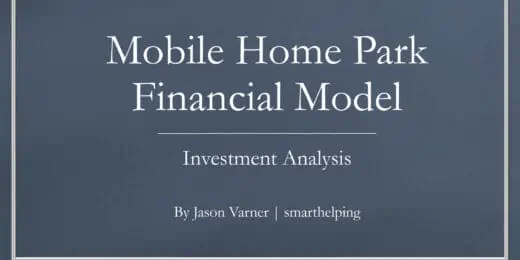Revolutionize Your Approach to Calculating Terminal Value

Revolutionize your approach to calculating terminal value by implementing innovative valuation techniques. Maximize your financial forecasts and make well-informed investment decisions.
In the fast-paced world of finance, the accurate calculation of terminal value is crucial for strategic planning and investment analysis. As the cornerstone of any discounted cash flow valuation, it represents a significant portion of the total value, making it imperative to adopt an advanced methodology.
By embracing modern approaches and leveraging cutting-edge tools, you can gain a competitive edge and enhance the precision of your terminal value calculations. This comprehensive guide will explore the latest strategies and best practices to revolutionize your approach, enabling you to optimize your valuation process and drive better investment outcomes. Stay ahead of the curve and transform your financial analysis capabilities with the most effective techniques for calculating terminal value.
Terminal Value: An Essential Concept In Finance
Understanding the concept of terminal value is crucial in financial analysis. It plays a significant role in determining the long-term worth of an investment.
Understanding Terminal Value
Terminal value signifies the estimated value of an investment at the end of a specific period.
- Used in valuation models to calculate the total worth of an investment.
- Reflects the expectation of future cash flows beyond the forecasted period.
Importance Of Terminal Value In Financial Analysis
Terminal value is imperative for making informed financial decisions and projections.
- Helps in evaluating the growth potential of an investment beyond the short term.
- Enables investors to assess the long-term sustainability of their investments.
Traditional Methods Of Calculating Terminal Value
Discover the traditional methods used to calculate terminal value in valuation analysis. Understanding these approaches can revolutionize your strategy and provide deeper insights into the long-term worth of an investment. By incorporating these time-tested techniques, you can enhance your approach to terminal value calculations.
When evaluating long-term investments, understanding the terminal value (TV) of an investment is crucial. Terminal value represents the future value of cash flows in perpetuity, assuming a certain growth rate beyond the forecast period. It’s a critical concept in finance, particularly in the realms of corporate finance, private equity, and investment banking, as it significantly impacts the valuation of companies. There are several traditional methods used to calculate terminal value, each with its unique assumptions and applications. Let’s delve into three prominent methods: the Perpetuity Growth Model, the Exit Multiple Method, and the Gordon Growth Model.
Perpetuity Growth Model
The Perpetuity Growth Model is a foundational approach in calculating terminal value, built on the premise of constant growth indefinitely into the future. This method assumes that the free cash flows of a company will continue to grow at a stable, perpetual rate forever. The formula to calculate terminal value using this model is:
[ TV = \frac{FCF_{1}}{(WACC – g)} ]
where (FCF_{1}) is the free cash flow in the first year beyond the forecast period, (WACC) is the Weighted Average Cost of Capital, and (g) is the perpetual growth rate of the free cash flows. This model is widely used due to its simplicity and the rational assumption of steady growth, which is common for mature companies in stable industries.
Exit Multiple Method
Unlike the Perpetuity Growth Model, which relies on growth assumptions, the Exit Multiple Method values a business based on comparable company metrics. This method involves applying a multiple (e.g., EV/EBITDA, P/E) that is derived from comparable companies or industry averages to the company’s financial metric (e.g., EBITDA, earnings) at the end of the projection period. The formula can be simplified as:
[ TV = Financial\ Metric \times Comparable\ Multiple ]
The choice of multiple and financial metric depends on the industry norms and the specific characteristics of the company being valued. The Exit Multiple Method is particularly useful in industries where acquisitions are common, as it reflects how much investors are willing to pay for similar companies.
Gordon Growth Model
The Gordon Growth Model, also known as the Dividend Discount Model (DDM) for a perpetuity with growth, specifically focuses on valuing a company based on its dividends. It is an offshoot of the Perpetuity Growth Model that incorporates dividends as a proxy for the cash flows to the shareholders. The model assumes that dividends will continue to grow at a constant rate indefinitely. The formula for the Gordon Growth Model is:
[ TV = \frac{D_{0} \times (1 + g)}{(r – g)} ]
where (D_{0}) is the dividend per share paid in the last period, (g) is the growth rate of dividends, and (r) is the required rate of return or discount rate. This model is particularly useful for companies that pay regular and increasing dividends, typically seen in mature and stable sectors.
Each of these traditional methods of calculating terminal value offers a different lens through which to evaluate long-term investments, with the choice of model depending on the specific context and characteristics of the investment being appraised. Understanding the assumptions and applications of each model is key to effectively leveraging them in financial analysis and investment decision-making.
The Limitations Of Traditional Approaches
Traditional approaches to calculating terminal value have their limitations. By revolutionizing your approach, you can overcome these limitations and find more accurate and reliable results for your calculations. Say goodbye to the constraints of traditional methods and embrace a new way of determining terminal value.
Assumptions And Sensitivity Analysis
Traditional approaches to calculating terminal value often rely heavily on assumptions, which can pose limitations and hinder accuracy. One major drawback is the lack of sensitivity analysis, where the impact of changing assumptions on the final valuation is not adequately considered. This approach assumes that all input variables remain constant, failing to address potential shifts in market dynamics that could significantly impact the terminal value.
Without sensitivity analysis, investors may not fully grasp the robustness of their valuation models and the potential risks associated with certain assumptions. It’s vital to remember that even small changes in variables like discount rates or growth rates can yield vastly different terminal values. Hence, a lack of sensitivity analysis undermines the reliability and credibility of the calculated terminal value.
Shortcomings In Estimating Growth Rates
Another limitation of traditional approaches lies in estimating growth rates. These methods often rely on historical data or industry averages, failing to capture the dynamic nature of businesses and their potential for future growth. Past performance, while informative, may not provide an accurate representation of future growth opportunities and trends.
Furthermore, relying solely on industry averages disregards individual company-specific factors that can significantly impact growth rates. Each company operates within its unique competitive landscape, market conditions, and possesses its distinct strengths and weaknesses. Failure to account for these factors can result in an inaccurate estimation of terminal value and may compromise investment decisions.
Lack Of Consideration For Industry-specific Factors
Traditional approaches lack consideration for industry-specific factors that influence terminal value calculation. These factors can range from regulatory changes to technological advancements, customer preferences, competitive landscapes, and economic trends. Failing to incorporate these industry-specific dynamics into the valuation model can lead to an incomplete understanding of the company’s growth potential and terminal value.
By disregarding industry-specific factors, traditional approaches overlook crucial information that can shed light on future cash flows and risk profiles. Investors, therefore, need to adopt more sophisticated approaches that account for these industry-specific factors to ensure a more accurate and comprehensive valuation analysis.
In summary, traditional approaches to calculating terminal value come with their limitations. The lack of sensitivity analysis, shortcomings in estimating growth rates, and overlooking industry-specific factors all contribute to inaccurate valuations. It is crucial for investors to recognize these limitations and explore alternative methods that address these drawbacks to revolutionize their approach to calculating terminal value.
Introducing Advanced Methods For Terminal Value Calculation
Monte Carlo Simulation
Monte Carlo Simulation is an advanced method that allows for a more dynamic and nuanced approach to estimating terminal value. By simulating a wide range of possible future scenarios, it provides a more comprehensive and realistic assessment of terminal value, taking into account the uncertainty and volatility of future cash flows.
Option Pricing Models
Option Pricing Models offer a sophisticated way to determine terminal value by considering the flexibility and strategic choices available to a company in the future. These models provide a robust framework for quantifying the value of these options embedded in the investment, resulting in a more accurate estimation of terminal value.
Market Multiples Analysis
Market Multiples Analysis enables a comparative evaluation of terminal value by leveraging industry-specific metrics and benchmarks. By analyzing multiples such as price-to-earnings or enterprise value-to-revenue ratios of comparable companies, a more refined and contextually relevant terminal value can be derived.
The Benefits Of Advanced Approaches
Revolutionizing the calculation of terminal value through advanced approaches comes with a myriad of benefits that can significantly enhance your valuation process. These advanced methodologies not only improve accuracy and precision but also integrate a comprehensive risk assessment and tailor the terminal value to industry dynamics, resulting in more informed and strategic decision-making.
Enhancing Accuracy And Precision
Advanced approaches enable a more precise and accurate calculation of terminal value, reducing the margin of error and providing a more reliable valuation. By leveraging advanced models and analytical tools, you can achieve a more refined estimate of the future cash flows, ensuring your valuation is more representative of the company’s true worth.
Incorporating Risk Assessment
Integrating risk assessment into the calculation of terminal value allows for a more holistic evaluation of the company’s future prospects. By factoring in various risk elements, such as market volatility, industry-specific challenges, and macroeconomic conditions, you can attain a more comprehensive understanding of the potential uncertainties and mitigate them effectively.
Tailoring Terminal Value To Industry Dynamics
Customizing the terminal value calculation to align with the specific dynamics of the industry provides a more nuanced and industry-specific valuation. By considering industry trends, competitive landscape, and regulatory factors, you can derive a terminal value that accurately reflects the unique characteristics and potential growth opportunities within the industry.
Implementing Advanced Techniques In Financial Modelling
In today’s rapidly changing financial landscape, it is crucial for businesses to stay ahead by implementing advanced techniques in financial modelling. One such technique that can revolutionize your approach to calculating terminal value is incorporating data-driven calculations and making informed assumptions. Additionally, using specialized software and tools designed for advanced calculations can greatly enhance the accuracy and efficiency of your financial models. Finally, conducting thorough model validation is vital to ensure the reliability and integrity of your calculations. Let’s delve deeper into each of these areas:
Data Requirements And Assumptions
Accurate financial modelling heavily relies on having reliable data and making informed assumptions. When it comes to calculating terminal value, it is essential to gather historical financial data as well as industry-specific data that can provide insights into future performance. Additionally, assumptions related to growth rates, discount rates, and market conditions should be carefully evaluated before incorporating them into the model. By incorporating robust data requirements and assumptions, you can elevate the accuracy and reliability of your terminal value calculation.
Software And Tools For Advanced Calculation
To simplify complex calculations and streamline the modelling process, utilizing specialized software and tools is essential. These tools offer advanced features such as scenario analysis, sensitivity analysis, and Monte Carlo simulation. By leveraging these features, you can assess the impact of different variables and scenarios on terminal value calculation. Moreover, these software and tools enable you to automate repetitive tasks, increase accuracy, and reduce the risk of human error. Ensure that you choose a reliable and user-friendly tool that aligns with your specific modelling requirements to maximize the benefits.
Key Considerations For Model Validation
Model validation is a critical step in ensuring the reliability and integrity of your financial models. It involves assessing the accuracy and soundness of the calculations, assumptions, and underlying logic. During the validation process, it is important to compare the results of the model with historical data, industry benchmarks, and expert opinions. Additionally, stress-testing and sensitivity analysis can be conducted to evaluate the model’s performance under different scenarios. By conducting thorough model validation, you can identify and rectify any errors or discrepancies, instilling confidence in your terminal value calculation.
Case Studies: Real-world Applications Of Advanced Terminal Value Methods
Exploring the real-world applications of advanced terminal value methods unveils a treasure trove of insights across various industries. These methods, which are critical for assessing the future worth of an investment, take on new dimensions when applied within different sectors. Here, we delve into how these sophisticated valuation techniques offer substantial benefits in tech, real estate, and retail.
Tech Sector Valuation Using Monte Carlo Simulation
In the rapidly evolving tech sector, traditional valuation methods often fall short due to the high level of uncertainty and the fast pace of innovation. Enter the Monte Carlo simulation—a technique that leverages the power of dynamic projections based on a range of possible outcomes. This approach allows analysts and investors to evaluate the potential future value of tech companies with greater nuance.
By simulating thousands of scenarios, incorporating variables such as market size, competition intensity, and technological advancements, the Monte Carlo method provides a probabilistic view of investment outcomes. This is particularly useful in the tech sector, where the trajectory of a company can drastically change based on product launches, regulatory changes, or shifts in consumer behavior. As a result, investors can make more informed decisions, balancing risks and rewards more effectively.
Real Estate Investment Analysis Using Option Pricing Models
The application of option pricing models, traditionally used in finance to value securities, has found a novel use in real estate investment analysis. These models enable investors to strategically assess the future value potential of real estate assets and mitigate risks. By viewing a real estate investment as an option, investors can evaluate the cost of opportunities and the value of flexibility in development projects.
This approach is particularly valuable in volatile or uncertain markets, where the ability to delay, expand, or abandon a project can significantly influence its viability. Option pricing models consider various factors, including market trends, interest rates, and the project’s unique characteristics, to provide a nuanced understanding of its potential. This strategic assessment tool empowers real estate investors to make decisions that align with both market conditions and their long-term investment goals.
Comparative Analysis Of Market Multiples In Retail Industry
The retail industry, with its competitive landscape and thin profit margins, necessitates a keen understanding of market positioning and value. Comparative analysis of market multiples offers retailers and investors a data-driven approach to decision-making. By examining metrics such as price-to-earnings (P/E) ratio, price-to-sales (P/S) ratio, and enterprise value-to-EBITDA (EV/EBITDA), businesses can benchmark themselves against peers and identify competitive advantages or areas for improvement.
This analysis is crucial for strategic planning, investment decisions, and valuation exercises. It enables retailers to gauge their performance in the context of the broader market, understanding how they are valued relative to their competitors. Such insights are invaluable for informing business strategies, pricing, expansion plans, and even merger and acquisition activities.
The application of advanced terminal value methods like Monte Carlo simulation, option pricing models, and comparative analysis of market multiples extends far beyond theoretical finance. These methodologies provide practical, actionable insights that drive decision-making across the tech, real estate, and retail industries. As businesses and investors strive to navigate the complexities of the modern economic landscape, these tools offer a beacon of clarity and strategic direction.
Best Practices And Tips For Effective Terminal Value Calculation
Calculating the terminal value is a critical aspect of any valuation process, as it represents a significant portion of the total value of a business. To ensure accuracy and reliability in your terminal value calculations, it is essential to follow best practices and incorporate effective tips into your approach.
Applying Multiple Methods For Cross-validation
To enhance the credibility of your terminal value calculation, consider applying multiple methods to cross-validate your results. By using different approaches such as the Gordon Growth Model, Exit Multiple Method, and Perpetuity Growth Model, you can reduce the risk of errors and obtain a more robust estimate.
Performing Sensitivity Analysis
Conducting sensitivity analysis on your terminal value is crucial to understand the impact of key assumptions on the overall valuation. By varying parameters such as growth rates, discount rates, and terminal values, you can identify potential risks and ensure your valuation is resilient to changing market conditions.
Regular Review And Updating Of Terminal Value
It is imperative to regularly review and update your terminal value to reflect any changes in the business environment. By staying up-to-date with market trends and financial data, you can maintain the accuracy of your valuation and make informed decisions based on the most current information available.
Frequently Asked Questions
What Is Terminal Value In Finance?
Terminal value in finance is the present value of all future cash flows beyond the explicit forecast period. It represents a large portion of the total value of a business and is calculated using various methods such as the perpetuity growth model or exit multiple method.
Why Is Calculating Terminal Value Important?
Calculating terminal value is crucial as it gives insight into the long-term performance and value of an investment. It helps investors and analysts in determining the sustainable growth rate and the potential cash flow beyond the explicit forecast period, allowing for more accurate valuations and investment decisions.
What Are The Common Methods To Calculate Terminal Value?
The common methods to calculate terminal value include the perpetuity growth model, which assumes a constant growth rate, and the exit multiple method, which applies a multiple to a relevant metric (such as EBITDA or earnings) at the end of the forecast period.
Both methods help in estimating the future value of an investment.
How Does Terminal Value Impact Investment Analysis?
Terminal value significantly impacts investment analysis by providing a substantial portion of the total value of an investment. It influences key valuation metrics such as the net present value and internal rate of return, allowing investors to make informed decisions regarding potential returns and the attractiveness of the investment opportunity.
Conclusion
Revolutionizing your approach to calculating terminal value can have a profound impact on your investment decisions. By embracing innovative valuation techniques and staying updated on industry trends, you can unlock new opportunities and drive greater returns. Incorporating market dynamics, competition analysis, and future projections will enable you to make informed and strategic choices.
So, take the plunge and elevate your terminal value calculations to the next level for sustainable success in the ever-evolving investment landscape.



















































